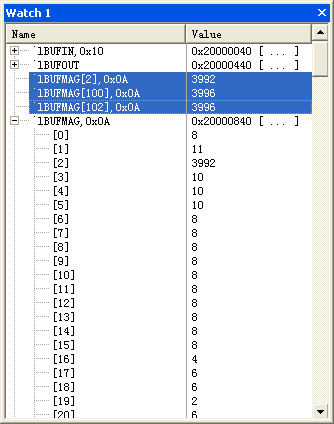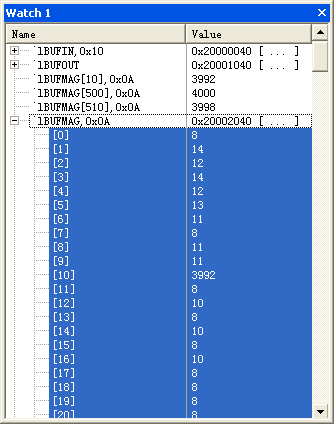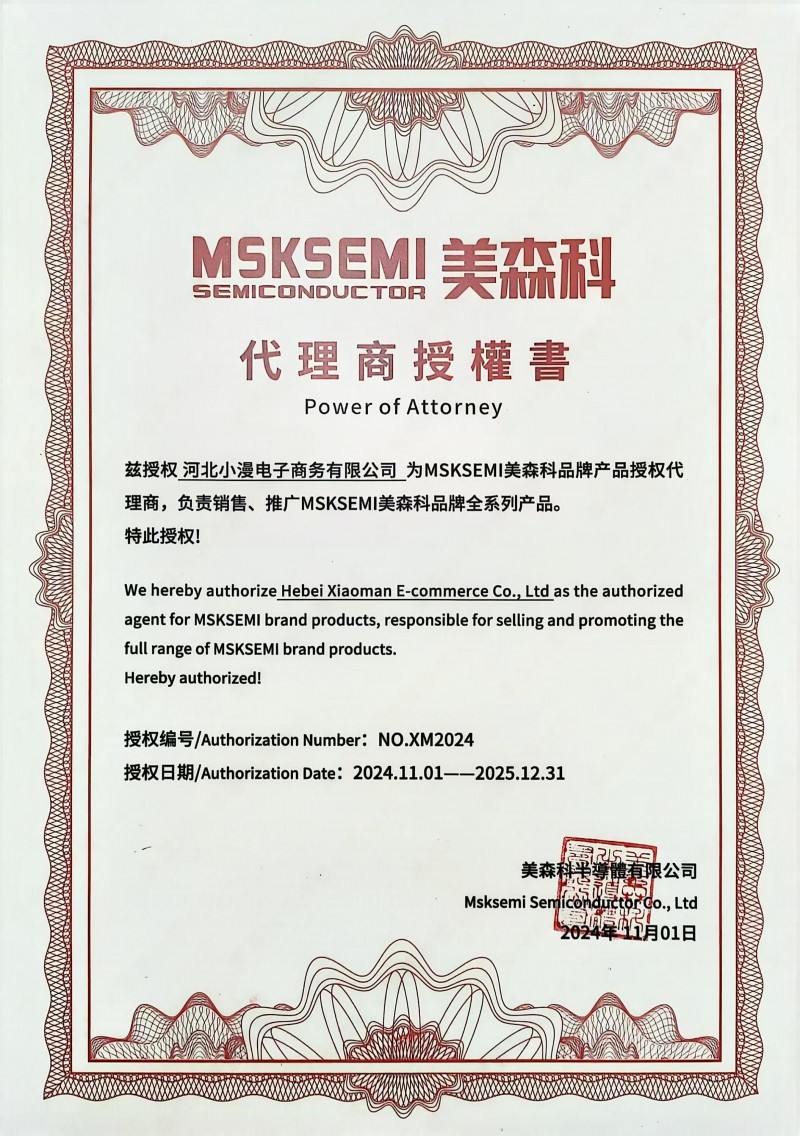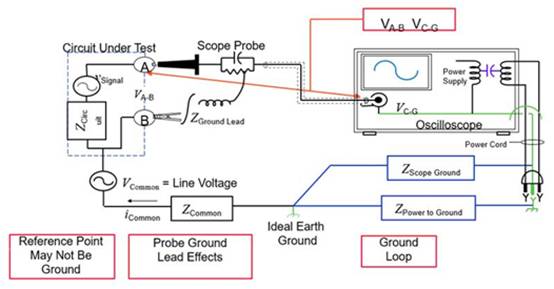/*
*********************************************************************************************************
FileName:dsp_asm.h
*********************************************************************************************************
*/
#ifndef __DSP_ASM_H__
#define __DSP_ASM_H__
*********************************************************************************************************
* FUNCTION PROTOTYPES
*********************************************************************************************************
*/
void dsp_asm_test(void);
void dsp_asm_init(void);
#endif /* End of module include. */
/*8888888888888888888888888888888888888888888888888888888888888888*/
/*8888888888888888888888888888888888888888888888888888888888888888*/
/*
* FileName:dsp_asm.c
* Author:Bobby.Chen
* Email:heroxx@163.com
* Date:2010-08-11
* Description:This file showes how to use the dsp library in mdk project.
* 运用三角函数生成采样点,供FFT核算
* 进行FFT测验时,按下面顺序调用函数即可:
* dsp_asm_init();
* dsp_asm_test();
*/
#include “stm32f10x.h”
#include “dsp_asm.h”
#include “stm32_dsp.h”
#include “table_fft.h”
#include
#include
/*
*********************************************************************************************************
* LOCAL CONSTANTS
*********************************************************************************************************
*/
#define PI2 6.28318530717959
// Comment the lines that you dont want to use.
// 要模仿FFT,请注释掉其他的预界说
// 此处也能够悉数注释掉,在MDK的工程特点->”C/C++”->”Preprocessor Symbols”-“Define:”中增加NPT_XXX项目
// 可是这样做法的缺陷是每次修正XXX数据,都会导致MDK下次编译时会编译悉数文件,速度太慢。
//#define NPT_64 64
#define NPT_256 256
//#define NPT_1024 1024
// N=64,Fs/N=50Hz,Max(Valid)=1600Hz
// 64点FFt,采样率3200Hz,频率分辨率50Hz,丈量最大有用频率1600Hz
#ifdef NPT_64
#define NPT 64
#define Fs 3200
#endif
// N=256,Fs/N=25Hz,Max(Valid)=3200Hz
// 256点FFt,采样率6400Hz,频率分辨率25Hz,丈量最大有用频率3200Hz
#ifdef NPT_256
#define NPT 256
#define Fs 6400
#endif
// N=1024,Fs/N=5Hz,Max(Valid)=2560Hz
// 1024点FFt,采样率5120Hz,频率分辨率5Hz,丈量最大有用频率2560Hz
#ifdef NPT_1024
#define NPT 1024
#define Fs 5120
#endif
/*
*********************************************************************************************************
* LOCAL GLOBAL VARIABLES
*********************************************************************************************************
*/
extern uint16_t TableFFT[];
long lBUFIN[NPT]; /* Complex input vector */
long lBUFOUT[NPT]; /* Complex output vector */
long lBUFMAG[NPT];/* Magnitude vector */
/*
*********************************************************************************************************
* LOCAL FUNCTION PROTOTYPES
*********************************************************************************************************
*/
void dsp_asm_powerMag(void);
/*
*********************************************************************************************************
* Initialize data tables for lBUFIN
* 模仿采样数据,采样数据中包括3种频率正弦波:50Hz,2500Hz,2550Hz
* lBUFIN数组中,每个单元数据高字(高16位)中存储采样数据的实部,低字(低16位)存储采样数据的虚部(总是为0)
*********************************************************************************************************
*/
void dsp_asm_init()
{
u16 i=0;
float fx;
for(i=0;i
fx = 4000 * sin(PI2*i*50.0/Fs) + 4000 * sin(PI2*i*2500.0/Fs) + 4000*sin(PI2*i*2550.0/Fs);
lBUFIN[i] = ((s16)fx)<<16;
}
}
/*
*********************************************************************************************************
* Test FFT,calculate powermag
* 进行FFT改换,并核算各次谐波幅值
*********************************************************************************************************
*/
void dsp_asm_test()
{
// 依据预界说挑选适宜的FFT函数
#ifdef NPT_64
cr4_fft_64_stm32(lBUFOUT, lBUFIN, NPT);
#endif
#ifdef NPT_256
cr4_fft_256_stm32(lBUFOUT, lBUFIN, NPT);
#endif
#ifdef NPT_1024
cr4_fft_1024_stm32(lBUFOUT, lBUFIN, NPT);
#endif
// 核算幅值
dsp_asm_powerMag();
// printf(“No. Freq Power\n”);
// for(i=0;i
// printf(“%4d,%4d,%10d,%10d,%10d\n”,i,(u16)((float)i*Fs/NPT),lBUFMAG[i],(lBUFOUT[i]>>16),(lBUFOUT[i]&0xffff));
// }
// printf(“*********END**********\r\n”);
}
/*
*********************************************************************************************************
* Calculate powermag
* 核算各次谐波幅值
* 先将lBUFOUT分解成实部(X)和虚部(Y),然后核算赋值(sqrt(X*X+Y*Y)
*********************************************************************************************************
*/
void dsp_asm_powerMag(void)
{
s16 lX,lY;
u32 i;
for(i=0;i
lX = (lBUFOUT[i] << 16) >> 16;
lY = (lBUFOUT[i] >> 16);
{
float X = NPT * ((float)lX) /32768;
float Y = NPT * ((float)lY) /32768;
float Mag = sqrt(X*X + Y*Y)/NPT;
lBUFMAG[i] = (u32)(Mag * 65536);
}
}
}
// 笔者运用的是金牛开发板,CPU为STM32F107VC;JLink V8,MDK-ARM 4.10
// 留意FFT运算成果的对称性,也即256点的运算成果,只要前面128点的数据是有用可用的。
// 64点FFT运算成果图(部分):

上图中,数组下标X对应的谐波频率为:N×Fs/64=N×3200/64=N*50Hz.
lBUFMAG[1] 对应 50Hz谐波幅值
上图中因为FFT分辨率50HZ,最大只能辨认1600Hz谐波,导致成果中呈现过错的数据。
// 256点FFT运算成果图(部分):

上图中,数组下标X对应的谐波频率为:N×Fs/256=N×6400/256=N*25Hz.
lBUFMAG[2] 对应 2×25 =50Hz谐波幅值
lBUFMAG[100] 对应 100×25=2500Hz谐波幅值
lBUFMAG[102] 对应 102×25=2550Hz谐波幅值
// 1024点FFT运算成果图(部分):

上图中,数组下标X对应的谐波频率为:N×Fs/1024=N×5120/1024=N*5Hz.
lBUFMAG[10] 对应 10×5 =50Hz谐波幅值
lBUFMAG[500] 对应 500×5=2500Hz谐波幅值
lBUFMAG[510] 对应 510×5=2550Hz谐波幅值
该工程中模仿信号源为:4000 * sin(PI2*i*50.0/Fs) + 4000 * sin(PI2*i*2500.0/Fs) + 4000*sin(PI2*i*2550.0/Fs)
信号为1个50Hz、1个2500Hz、1个2550Hz的正弦波混合信号,幅值为均为4000。









